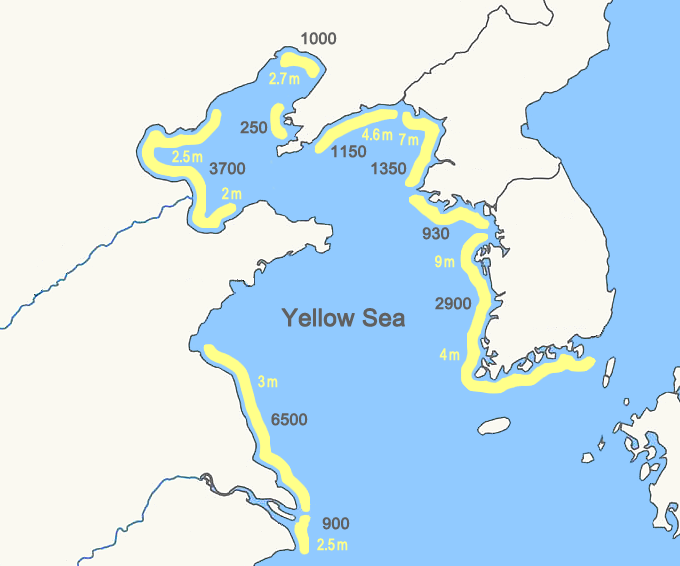The Yellow Sea is a shallow semi-enclosed sea lying between China in the west, and the Korean Peninsula to the east, between latitudes 41°00 N and 31°40' N and longitudes 117°35 E and 126°50' E, covering an area of approximately 458,000 km2 (Barter 2002).
Historical sea-level rise within the past 10,000 years led to the formation of the present geography of the Yellow Sea. The Yellow Sea proper has an average depth of 44-55m (Hong et al. 1998, Koh 1999), at its deepest reaching only c. 100m near Gageo Island and c. 120m near the volcanic Jeju Island. Within 30km of much of the west coast of the ROK the sea-floor has a gentle slope, and the sea is less than 20m deep, while 50km offshore the sea averages >60m (Feng 1998). Tidal currents are strong within coastal areas, and there is a steadily increasing tidal-range northwards along the west coast of the ROK, with a tidal-range of 4m in the southwest and 9.3m (occasionally more than 10m) in the northwest (Koh 1997). This combination of shallow sloping sea bottom and large tidal-range in the Yellow Sea led to the development of some of the world’s most extensive tidal-flats, covering an area of approximately 20,000 km2 in 2000 (Barter 2002).

Yellow numbers denote the tidal-range in meters, and grey numbers the area of intertidal wetland in km2.
The Yellow Sea is also one of the most heavily-exploited and disturbed marine regions in the world (Yellow Sea Ecoregion Planning Programme 2008). It is located in one of the world’s most densely populated regions and the catchments of its major rivers, including the Yellow and Yangtze Rivers in China and the Han River in the ROK, support more than 10% of the global human population (BirdLife International 2003).



